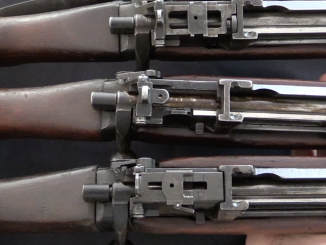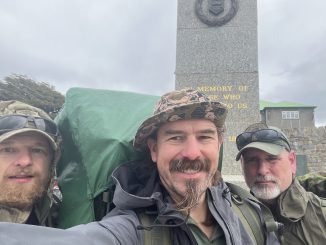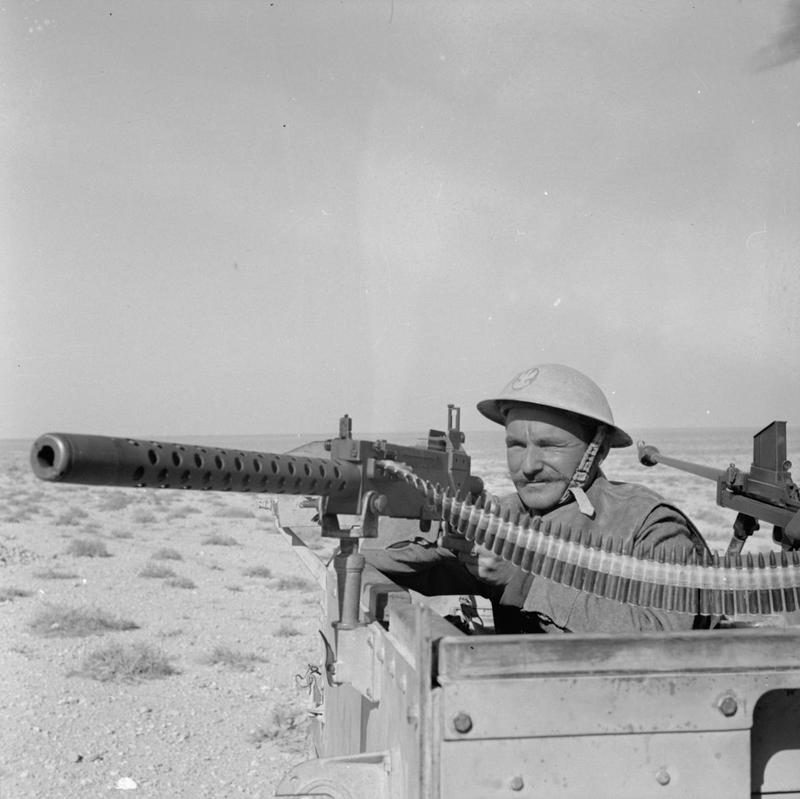When World War One began, the British did not have a formal sniping program, and by 1915 the British found themselves thoroughly outclassed by the Germans in this area. They responded by developing tactics and equipment for sniping, and by mid 1916 they had really outclassed the Germans. However, the mid-war British sniping rifles really left a lot to be desired, even if they were being used effectively in the field. There was no single military optic, instead a wide variety of commercial scopes were rounded up and put into use. The mounts for these scopes were offset to the left side of the rifles to allow for continued use of stripper clips. Clips were arguably not really necessary on these rifles, and the offset scopes led to substantial headaches in use, as they required calculating windage as well as elevation adjustments depending on range.
Through 1918, though, the British developed one of the best sniping rifles of the war, although it would be introduced too late to see virtually any front line service. This new rifle was a Winchester-made Pattern 1914 Enfield with a center-mounted optic, and was designated the P14 MkI W(T). The P14 rifles were more accurate than the SMLE, and the centrally mounted optic made for much simpler shooting. These rifles were deemed to be mechanically capable of 1.5 MOA shooting, with the practical expected group size being 3 MOA.
Three thousand of these P14 snipers’ rifles were assembled and kept in service after the end of the war, but in the mid 1930s a small additional batch of 79 were made for the Irish Free State by BSA. These were all eventually surplussed to the US, and the rifle in this video is one of those late-production guns.




I wonder if detachable magazines would have made the reload speed problem disappear. No need to fiddle around in a cartridge pouch when the preloaded magazines are right next to the sniper. The spotter should probably get a semi automatic rifle or a carbine just in case the other team gets too close. Or just have the squad MG hidden nearby… or am I wrong?
“semi automatic rifle”
Not so fast. At that time self-loading rifles were new technology for combat usage and mainly used as specialist’s weapons, if I am not mistaken for example RSC Mle 1917 was used by trench raiding groups.
Own one of these from Eddystone. First rifle I ever bought and still have it. But, it always shoots high, no matter who is firing it. Way high, about a foot at 100 yards. Anybody have a clue why this is?
Like the rifle, tad heavy but definitely sturdy and cool. Cock on closing is a different feature. When I first got, I thought all bolt actions did that. Learned it was not the case.
If it’s exactly 1foot high at 100 yards, my guess would be it’s zeroed for about 250-300 would be my guess.
If it’s shooting a foot high at 100 yds with the battle sight, that’s about right (within a couple of inches) cos the battle sight is set for 400 yds.
Thanks guys, that helps. Guess it came from the factory that way and nobody changed them. Not exactly sure how I would lower it to reflect a closer range.
So aim 1 foot low at 100 yards!
Now if I could get detailed drawings or close up pictures of that scope mount.
“the offset scopes led to substantial headaches in use, as they required calculating windage as well as elevation adjustments depending on range.”
I’m not sure that’s strictly true in practice – provided that the vertical plane of the sight is parallel to the vertical plane of the rifle, the offset due to the sight is constant. If your sight is offset by 2″ and your mean POI is 2″ right at 100 yds with dispersion of 3 MOA, you do need to aim 2″ left at this range.
But once you’re at 200 yds, your group size is 6″, so this 2″ is starting to be insignificant, since the error is 1/3 of the group size. At 300 yds, a 2″ error in a 9″ group is completely lost in the noise and can be ignored. At even longer ranges, it’s infinitessimal.
Having built myself an ersatz WW1 sniper with an offset scope to test this, I think the only complication is remembering your sight offset at short ranges. At longer ranges, forget it. However, it is important to take the offset into account when zeroing so that there’s not an angular error, which would be more of a PITA.
An angular error with a 2″ sight offset and zeroed to POA at 100 means that, at 200 you’re shooting 2″ left, at 300 4″ left, 400 6″ left and so on. But even saying that, these figures are still well under the group sizes.
I read that, British snipers were once issued with shields, without holes for that offset optical sight. However I am not sure if that was true?
In Robert Graves’ memoir ‘Goodbye To All That,’ he mentions that the Royal Army lacked any central ‘system’ around sniping.
A crack regiment, like Graves’ Royal Welsh Fusiliers, responded vigorously to the threat of sniping. Officers with vast hunting/shooting experience took to no-man’s land and wiped out Germans trying to infiltrate or set up shots. Other regiments just sustained ongoing casualties with little attempt to even grasp the cause.
Sorry to be pedantic, but the British Army has never officially been called the Royal Army since the defeat of Charles I army in the last English Civil War.
And even more pedantic, in the British army in 1914, hunting had nothing to do with guns at all.
Mr. McBride, in his “A Rifleman Goes to War,” swore by offset telescopic sights (his were even the much-maligned Warner-Swazey unit), so that the iron sights remained available for suitable situations. Of course he was shooting a Ross. I notice this P14 mounting seems to allow iron sights to be aimed with via the openings under the telescope. Is this practical? Was it done?